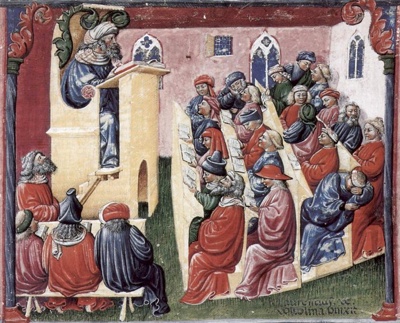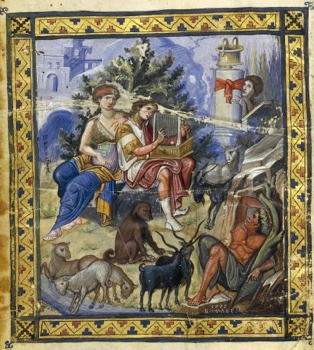 Weird Stuff
Weird Stuff  Weird Stuff
Weird Stuff  Miscellaneous
Miscellaneous Top 10 Things Crypto Was Supposed to Change & What Actually Did
 History
History 10 Huge Historical Events That Happened on Christmas Eve
 Music
Music 10 Surprising Origin Stories of Your Favorite Holiday Songs
 History
History 10 Less Than Jolly Events That Occurred on December 25
 Weird Stuff
Weird Stuff 10 Funny Ways That Researchers Overthink Christmas
 Politics
Politics 10 Political Scandals That Sent Crowds Into the Streets
 Weird Stuff
Weird Stuff Ten Bizarre Facts About The Doge Meme
 Our World
Our World 10 Ways Your Christmas Tree Is More Lit Than You Think
 Movies and TV
Movies and TV The 10 Coolest Stars to Set Sail on The Love Boat
 Weird Stuff
Weird Stuff 10 Fascinating Facts You Might Not Know About Snow
 Miscellaneous
Miscellaneous Top 10 Things Crypto Was Supposed to Change & What Actually Did
 History
History 10 Huge Historical Events That Happened on Christmas Eve
Who's Behind Listverse?

Jamie Frater
Head Editor
Jamie founded Listverse due to an insatiable desire to share fascinating, obscure, and bizarre facts. He has been a guest speaker on numerous national radio and television stations and is a five time published author.
More About Us Music
Music 10 Surprising Origin Stories of Your Favorite Holiday Songs
 History
History 10 Less Than Jolly Events That Occurred on December 25
 Weird Stuff
Weird Stuff 10 Funny Ways That Researchers Overthink Christmas
 Politics
Politics 10 Political Scandals That Sent Crowds Into the Streets
 Weird Stuff
Weird Stuff Ten Bizarre Facts About The Doge Meme
 Our World
Our World 10 Ways Your Christmas Tree Is More Lit Than You Think
 Movies and TV
Movies and TV The 10 Coolest Stars to Set Sail on The Love Boat
Top 10 Reasons The Dark Ages Were Not Dark
I believe that we can safely say that the period of man’s history from 476 AD to 1000 AD is the most maligned of all. This period, known to historians as the Early Middle Ages, is still referred to by most laymen as the Dark Ages. In fact the term “dark ages” is almost as ancient as the period itself – it was coined in the 1330s by Petrarch, the Italian scholar, to refer to the decline of Latin literature. It was later taken by the protestant reformers (16th century) and then the members of the Englightenment (18th century) as a derogatory term with much broader implications, because they saw their own “enlightenment” as absent from the earlier period. Hardly a fair judgement on the past. Fortunately for modern students of history, the term is now officially known as the Early Middle Ages – a name which has no connotations at all. So, having given you the background on the terms, here are ten reasons that the dark ages were, in fact, a period of great progress and light.
SEE ALSO: Top 10 Reasons We Should Revive the Dark Ages
10 Universities Are Born
The Classical Education (still used today in some schools) was the system used by the Universities which were created in the Early Middle Ages (the first in history). The universities taught the arts, law, medicine, and theology (the study of religion). The University of Bologna (founded in 1088) was the first ever to grant degrees. In addition to the classical structure (based on Ancient Greek education), these medieval universities were heavily influenced by Islamic education which was thriving at the time. While women were not admitted to Universities in the early days, the education of women did exist. The convents of the day educated the young women who would often enter at a very young age. One such women (Hildegard Von Bingen) is one of the most celebrated women of the Medieval era who had great influence over the men in power at the time.
9 Scientific Foundations Laid
While progress in Science was slow during this period in the West, the progress was steady and of a very high quality. The foundation was laid here for the wonderful blossoming of science that was to occur in the High Middle Ages to come. It can be safely said, that without the study of Science in the Early Middle Ages, we would be considerably behind in our scientific knowledge today. Ronald Numbers (professor at Cambridge University) has said: ‘Notions such as: “the rise of Christianity killed off ancient science”, “the medieval Christian Church suppressed the growth of the natural sciences”, “the medieval Christians thought that the world was flat”, and “the Church prohibited autopsies and dissections during the Middle Ages” [are] examples of widely popular myths that still pass as historical truth, even though they are not supported by historical research.’ [Source: Video or audio Lecture]
8 Carolingian Renaissance
The Carolingian Renaissance was a period of advancements in literature, writing, the arts, architecture, jurisprudence, liturgical and scriptural studies which occurred in the late eighth and ninth centuries. The Carolingians were Franks and the most well known is Charlemagne. The Carolingian empire was considered a rebirth of the culture of the Roman Empire. At the time, Vulgar Latin was beginning to be replaced by various dialects as the main spoken languages in Europe, so the creation of schools was vital to spread knowledge further amongst the common people. It was also this period which gave us the foundation of Western Classical Music.
7 Byzantine Golden Age
Under Justinian this period gave us the Corpus Juris Civilis (Body of Civil law) – an enormous compendium of Roman Law. Literacy was high,elementary education was widespread (even in the countryside), middle education was available to many people, and higher education (as discussed above) was also widely accessible. In the Byzantine empire during this period we saw a massive outpouring of books – encyclopedias, lexicons, and anthologies. While they did not create a lot of new thinking, they solidified and protected for the future much of what was already known.
6Religious Unity
This is a sticky topic, but the fact is, during the Early Middle Ages, Europe had a united Church, an agreed upon canon of the Bible, and a well developed philosophical tradition. This led (as one would expect) to a great period of peace within the Western nations. While Islam was not in agreement with the doctrines of the West, much mutual sharing of information happened and the Islamic contribution to the West is still felt today. This union of beliefs allowed for intellectual progress unseen since the Roman Empire at its heyday. In a sense you might consider this period as the calm before the storm, as it was merely a hundred years later that the first Crusade would be called to take Jerusalem back from the Muslims – an event which ended the flow of knowledge between groups.
5 Algebra Arrived
Thanks to the learning of the Islamic people in the East, the world received its first book on algebra. The Compendious Book on Calculation by Completion and Balancing was written by Al-Khw?rizm? (790-840) and the Arabic title of the book gave us the word “algebra”. The word algorithm comes from al-Khw?rizm?’s name. This book gave us the first systematic solution of linear and quadratic equations. Later translations of his books also gave us the decimal positional number system we use today. Al-Khw?rizm?, along with Diophantas, is considered the Father of algebra.
4Art and Architecture
During the Early Middle Ages, architecture was diverse and innovative. It introduced the idea of realistic images in art and it laid the groundwork for the Romanesque period which was to come in the High Middle Ages. The period also included the introduction and absorption of classical forms and concepts in architecture. It can safely be said that this period was the first period of high art – with previous styles (Migration period) being much more functional and less “artistic”. In the Early Middle Ages we witness the birth of an astonishing and beautiful history of art and building.
3 Fantastic Weather

Trivial as it may seem, the weather played a much greater part in the lives of the average people during the Middle Ages and beyond. When we think of the “Dark Ages” we tend to see images of snow storms, rain, thunder, and darkness – such as we see in films like “The Name of the Rose”. The fact is, in the Early Middle Ages, the North Atlantic region was warming up – so much so that at the opening of the High Middle Ages (1100 AD), the region was 100 years into an event now known as the Medieval Warm Period. This warm period thawed much ice and enabled the Vikings to begin their colonization of Greenland and other northern nations. Ironically, the Protestant reformation (16th century) up until the 19th century suffered the Little Ice Age – the period of “enlightenment” was literally darker and colder than the “dark” ages. During this period, reforms and better knowledge of agriculture provided a boost to food supplies.
2 Law Becomes Fair
The Early Middle Ages had a complex system of laws which were often not connected, but they were effective and fair for the most part. For merchants traveling around the world, there was the Lex Mercatoria (Law Merchant) which had evolved over time, rather than being created. This law included arbitration and promoted good practice amongst traders. At the same time, Anglo Saxon Law was formed with a focus on keeping peace in the land. While this eventually lead to some very tough laws, living under the legal system in the Early Middle Ages was probably the best time to live – as it was still flexible and fair for the majority. The third important legal system was the the Early Germanic Law which allowed each person to be tried by his own people – so as to not be disadvantaged by ignorance or major cultural differences.
1 Agricultural Boom
If you were wanting to die a martyr by starvation, the Early Middle Ages were not the time to do it! As a consequence of the excellent weather and greater agricultural knowledge, the West did extremely well. Iron tools were in wide use in the Byzantine empire, feudalism in other parts of the world introduced efficient management of land, and massive surpluses were created so that animals were fed on grains and not grass. Public safety was also guaranteed under the feudal system and so peace and prosperity was the lot for most people.

















